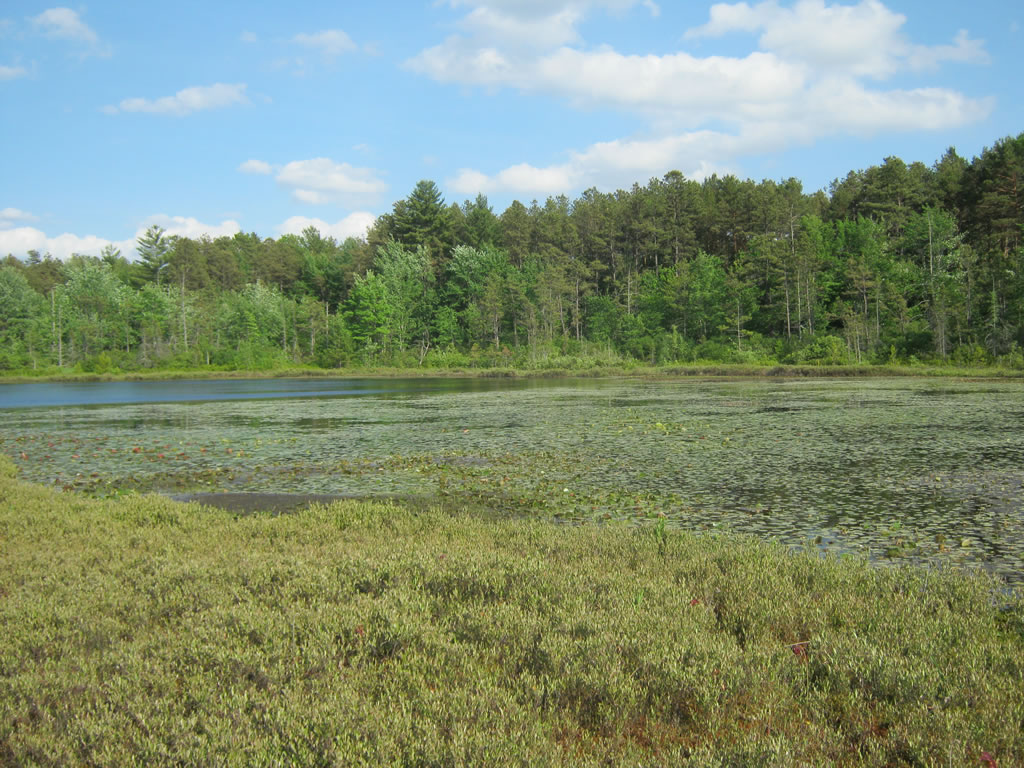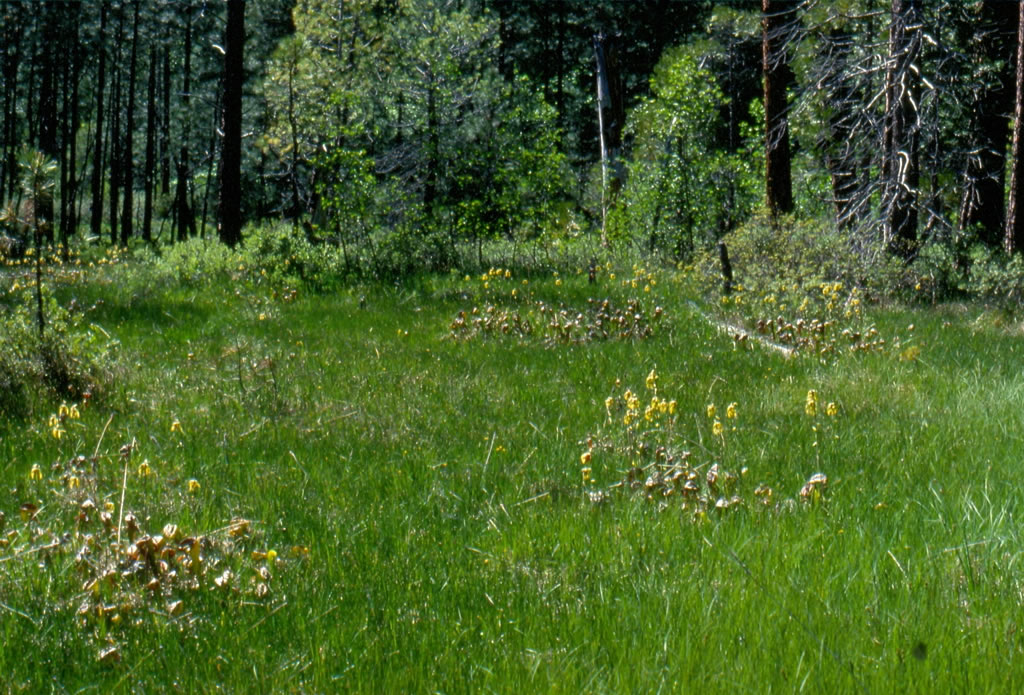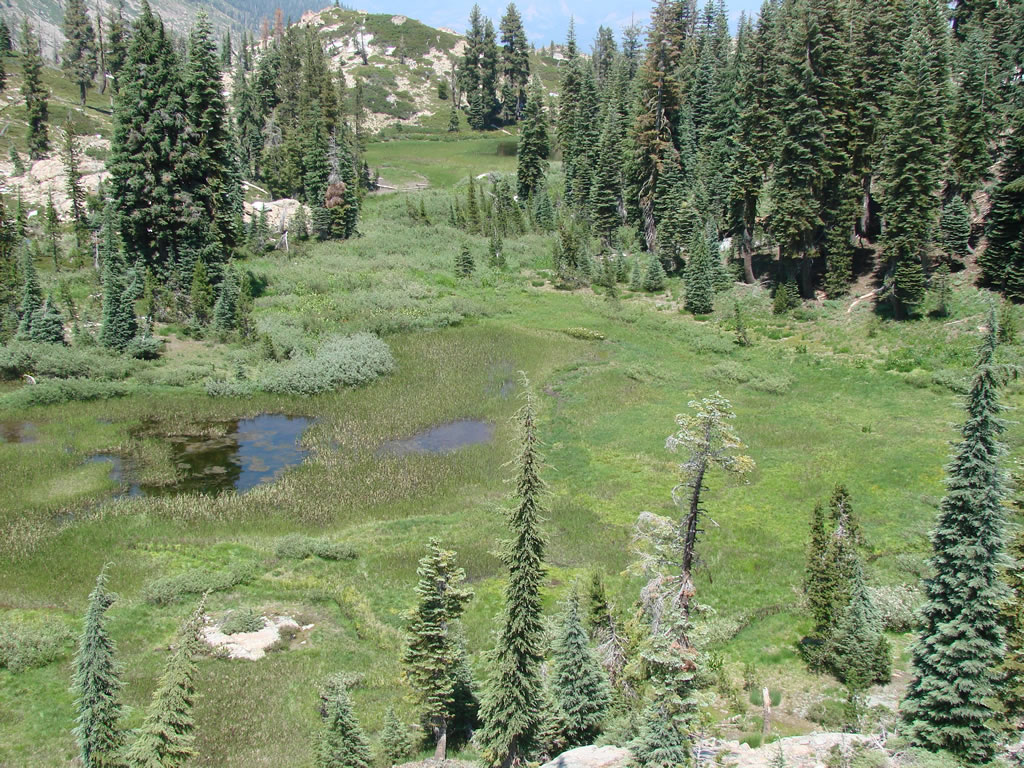What is a Fen?
“Fens are an important and unique wetland type. Fens are peat-forming wetlands that rely on groundwater input and require thousands of years to develop and cannot easily be restored once destroyed. Fens are also hotspots of biodiversity. They often are home to rare plants, insects, and small mammals. Larger animals like deer and livestock graze in this type of wetland. Fens are valuable to humans as well. They are important as sites of groundwater discharge and are good indicators of shallow aquifers. Vegetation in all wetlands plays an important role in recycling nutrients, trapping eroding soil, and filtering out polluting chemicals such as nitrates. In addition, fens figure prominently in nearly all scenarios of CO2-induced global change because they are a major sink for atmospheric carbon.”
Weixelman & Cooper 2009
Fens are a type of wetland. Wetlands are ecosystems where the water table is at or near the ground surface for most of the growing season on most years, and as a consequence, the substrate is poorly aerated, and inundation or saturation last long enough that the dominant plants are those that can exist in wet and reducing conditions. The long duration anaerobic conditions limit the decomposition of plant roots, leaves, and stems and over time this organic matter accumulates to form peat soil. Wetlands include the margins of streams and rivers, and the shores of lakes. There are several types of wetlands: swamps, marshes, bogs, and fens.
Swamps
Swamps are wetlands that are dominated by woody plants. In a swamp the water originates from groundwater or watercourses with the water table well below the surface so that the surface layer is aerated and supports the roots of trees and other tall woody plants.
Marshes
Marshes are wetlands that are frequently or continually inundated and are dominated by herbaceous plant species adapted to these hydrologic conditions. Most of the water is received from the surface but some is groundwater. Nutrients are plentiful and the pH can be acidic to alkaline. There is an abundance of plant and animal life.
 Wet marsh area along the Sacramento River Bend. Image courtesy U.S. Backroads.
Wet marsh area along the Sacramento River Bend. Image courtesy U.S. Backroads.
Peatlands
Not all wetlands have conditions that allow for the accumulation of peat, but bogs and fens do. They are both types of peatlands.
Peat is organic matter (the dead remains of plants) that is deposited under water-soaked conditions as a result of incomplete decomposition. Peat accumulation occurs because the rate of organic matter production exceeds the rate of decomposition due to the soil being waterlogged. Peatlands form and are maintained only where the hydrologic regime produces perennial soil saturation.
A peatland is any type of peat covered terrain with an accumulation of at least 20 to 40 centimeters of peat within the upper 80 centimeters of the soil profile in the United States and Canada. In Europe, 30 centimeters of peat is sufficient to classify sites as peatlands. The thickness of the peat is critical for the ecosystem to function. The peat must be thick enough that they hold a large volume of water and the plants root in the peat must derive all or almost all of their water and nutrients from the peat body.
Globally, 50 to 70 percent of all wetlands are peatlands. Peatlands are the most widespread and abundant of all wetland types. They cover over four million square kilometers, or three percent of the land surface, and contain ten percent of all freshwater, and one-third of the world’s soil carbon, making them crucial in regulating atmospheric carbon dioxide. Peatlands are most abundant in boreal regions. The presence of a well-developed ground layer of mosses along with either abundant shrubs or sedges with sparse or no tree cover makes the ecology of these ecosystems very unique.
 Peatland global distribution. Image from the International Peatland Society.
Peatland global distribution. Image from the International Peatland Society.
The peatland functions to store water, support local agriculture in the form of livestock grazing, provide opportunities for tourism, crucial conservation areas for plant and animals, especially species at risk and scientific research. Peatlands directly or indirectly influence local communities by controlling freshwater quality and quantity, and hydrologic integrity. Indigenous people used peatlands for collecting wild plants and hunting.
Bogs and Fens
Peatlands are generally divided into two categories: bogs and fens. Both are permanently saturated wetlands.
Bogs receive water and nutrients only from the atmospheric precipitation. Thus bogs are found only in areas with abundant rainfall.
 Ponemah Kettle Hole, an example of a peat bog, Amherst, New Hampshire. Photo by Linnea Hanson.
Ponemah Kettle Hole, an example of a peat bog, Amherst, New Hampshire. Photo by Linnea Hanson.
Fens receive significant water and nutrients from a ground source of water. In California, the summer dry climate makes it impossible for bogs to form. However, ground water fed fens are widespread in the mountains of the Sierra Nevada, coast range and southern Cascades.
 Fen in the Butterfly Valley in spring, Plumas National Forest. Photo by Harold Carlson.
Fen in the Butterfly Valley in spring, Plumas National Forest. Photo by Harold Carlson.
Meadows
There are three types of meadows in the mountains of California: dry meadows, wet meadows, and peatlands. All meadows have sparse or no tree cover and have at least seasonally saturated soils. Peatlands were discussed above.
Dry Meadows
Dry meadows are only wet for several weeks following snowmelt.
 A dry meadow, Cedar Flat, Plumas National Forest. Photo by Linnea Hanson.
A dry meadow, Cedar Flat, Plumas National Forest. Photo by Linnea Hanson.
Wet Meadows
Wet meadows are wet for one to two months of the summer and peatlands are typically saturated for the entire summer.
 A wet meadow, Butterfly Valley Meadow, Plumas National Forest. Photo by Linnea Hanson.
A wet meadow, Butterfly Valley Meadow, Plumas National Forest. Photo by Linnea Hanson.
All three types may occur within individual meadows and form meadow complexes. Fens are important for their biological diversity and hydrologic characteristics in the forest ecosystem.
 Meadow Complex: pond, fen, and wet meadow, Helgramite Fen and Shorebird Fen, Plumas National Forest. Photo by Catie and Jim Bishop.
Meadow Complex: pond, fen, and wet meadow, Helgramite Fen and Shorebird Fen, Plumas National Forest. Photo by Catie and Jim Bishop.



